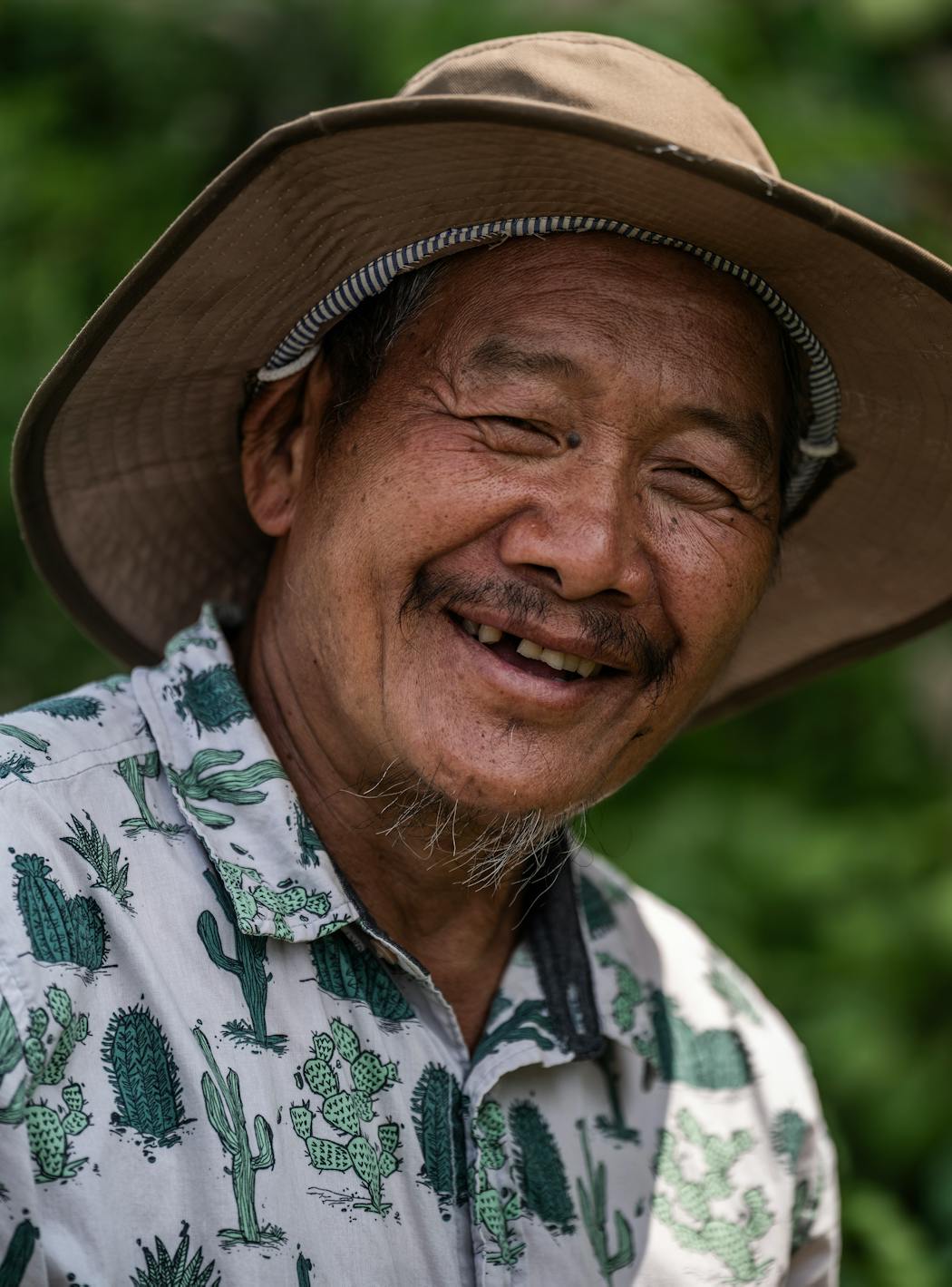Wangchou Yang walked through his outdoor garden booth at the Hmongtown Marketplace on St. Paul's Como Avenue, gently touching leaves and stems.
He plucked a stem from a small plant, rubbed it between his fingers and inhaled its aroma. The stem, steeped into a tea, can help with stomach issues, he said. Bending slowly, he took a leaf from a different plant and rubbed it on his opposite hand. This one, he said, helps with skin irritation.
For the past 20 years, Yang and his family have built a reputation in the Hmong community for their vast collection of medicinal plants — to treat ailments like high blood pressure, headaches, fever and rashes — that they sell at their farmers market booth business, Hmong Specialty Plants & Herbs.
Knowledge of such plants has traditionally been a guarded secret in Hmong culture, a rare expertise that elders could charge $1,000 to share.
To the Yangs, that gatekeeping of the information has led to young Hmong people not knowing the history behind the medicinal plants.
With the input of 29-year-old daughter Tang Yang, the family is modernizing its sales approach. Once only a face-to-face service, the Yangs now sell their products online and ship them, enabling the family to reach a wider audience of consumers interested in the multibillion-dollar market for plant extracts and herbal medicines.
Tang Yang also has been documenting her family's inventory and building a database of each plant's use so the knowledge is not lost.
"There were only a few who knew," she said. "And what will happen is they never share this information with anyone, and they will die and just take this knowledge with them to the grave."
A shifting consumer base
Wangchou Yang, 67, and Yer Lee, 66, immigrated to Minnesota from Laos in 1981, as many Southeast Asians did following America's withdrawal after the Vietnam War.
Yang found employment as an auto mechanic. To supplement his income, he and his wife also operated at a farmers market in White Bear Lake until they became among the first to open a booth at the Hmongtown Marketplace when it opened in 2006.
On average, 120 vendors sell goods at Hmongtown Marketplace each year, said marketplace manager Jameson Liu, whose father-in-law, Toua Xiong, owns the marketplace. Through the years, the number of vendors selling fresh produce and flowers has increased, Tang said, driving her family's pivot into selling primarily medicinal plants. That solidified four years ago when Wangchou and Yer Lee sold their produce booth at the market to another vendor.
For years, their main customers were older Hmong women in the Twin Cities. But as the marketplace's reputation as a destination for buying traditional Hmong plants grew, people from across the globe started stopping by their stall, Tang said.
In 2020, the Yangs launched a website to sell their medicinal plants online, allowing them to increase sales by shipping to customers across the U.S., Canada, India, Australia, Japan and South Korea. Tang also started a Facebook page, which has helped attract and engage consumers.
Millennials and Gen Zers who are interested in natural methods of health and wellness are a growing segment of buyers, Tang said, as are buyers who share similar traditions in medicinal plan use, such as people who are Vietnamese, Indian, Filipino and Hispanic.
Tang is trying to shift the business from seasonal to year-round. This fall, she wants to launch a line of dry herbs, a product with a long shelf life. She anticipates it being popular with expecting moms.
"We know there's a demand for it, and people have a really difficult time finding [the plants]," she said.
Conserving traditions for generational wealth
Janssen Hang — co-founder and executive director of the Hmong American Farmers Association in St. Paul and a first-generation Hmong American — said maintaining medicinal Hmong traditions has been challenging. That's mostly because for centuries, Hmong was only an oral language and medicinal practices went undocumented. A written language didn't exist until the 1950s, when Christian ministries came to Southeast Asia and introduced the Roman alphabet, he said.
Plus, those same ministries integrated Western medicine into Hmong culture.
"It's like, 'Well, we have great Western medicines. I don't need to teach you the traditional practices and medicine,'" Hang said. "But there has been a recourse where we want to know because that is part of our culture, part of our tradition."
For today's growers and farmers, passing down Hmong tradition requires curious, younger family members prying for information, said Hang, whose association manages a 155-acre farm in Dakota County. Twenty Hmong families, mostly living in the metro area, lease land there for farming, with 80% of those families having younger children who are learning the traditions and techniques needed to run the farm.
As a child, Tang Yang detested waking up before sunrise to set up her family's stall at the marketplace. But as the business grew, it required the labor of all of eight of her siblings to keep it going.
Tang Yang is the second-youngest child. While in college at Metro State, her emotional attachment to plants — and the family business — changed. She initially wanted to earn a degree in education to be a teacher. She switched to law, and then to nursing.
As her role in family venture grew, she realized a degree in business would be worth pursuing.
"It's weird now," she said, staring at her family's booth at the marketplace. "Now that I'm older, I have an appreciation for it."
She and an older sister are the most involved in the family business.
"There's value in this and keeping these plants alive," she said, "literally keeping them alive for future generations."
Tiger Woods to be lone player on negotiating committee with Saudis




